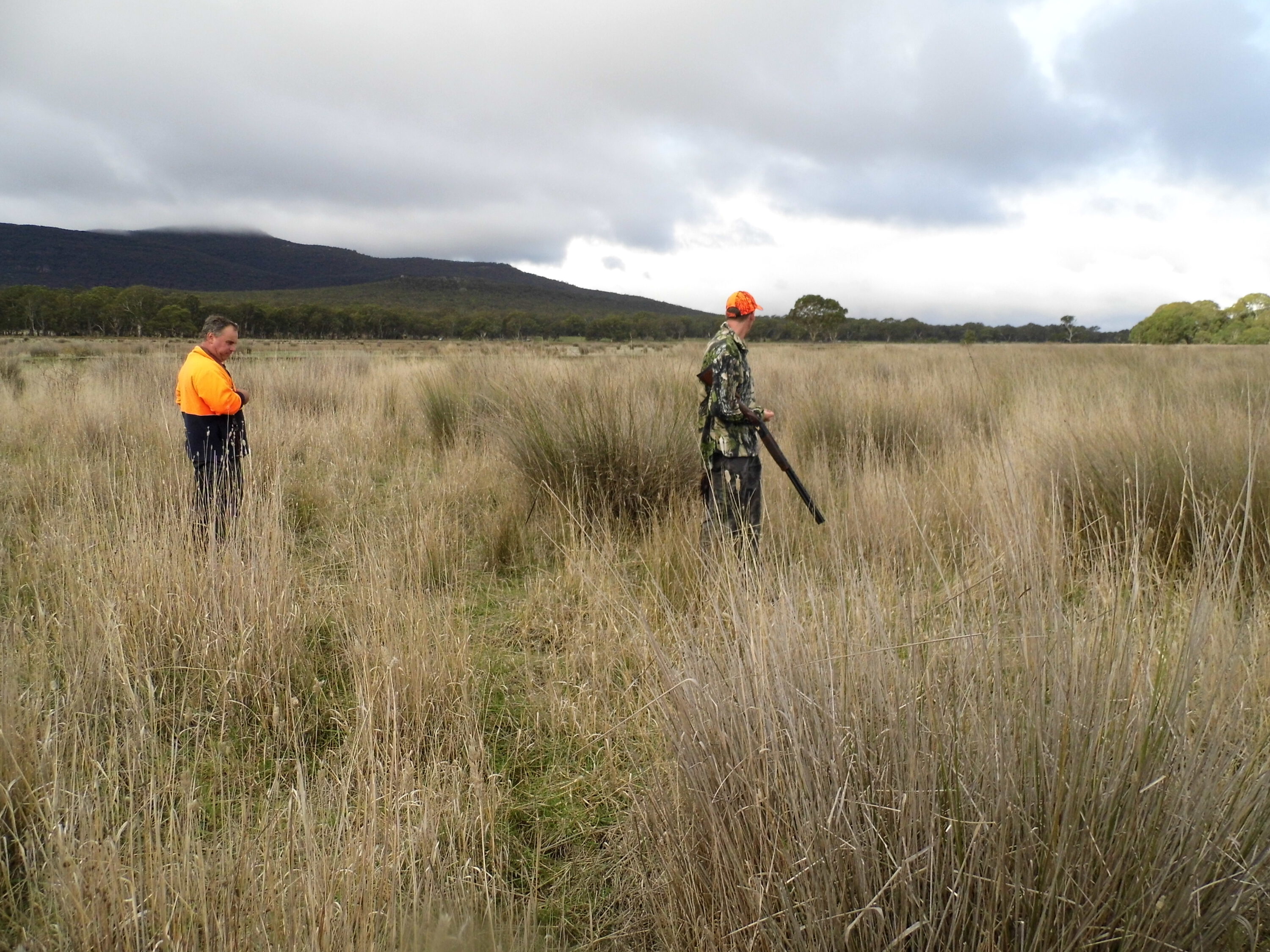
For a long time Leon Wright had yearned to hunt pheasant and finally the time had come.
As a young man the highlight of my hunting year, apart from duck opening, was my annual trip down to the Apple Isle to join my uncle, a couple of his mates and a few motley dogs for the start of the wallaby season. We would hunt the country around Marion Bay and Coles Bay for Bennett and Rufous wallabies. We would butt the wallabies and take them home to eventually make rissoles out of them.
That was a long time ago and those places are probably now weed infested National Parks. When not hunting I would keep myself occupied reading my uncle’s enormous supply of hunting magazines which really had me intrigued and I promised myself that one day I too would hunt those regal birds.
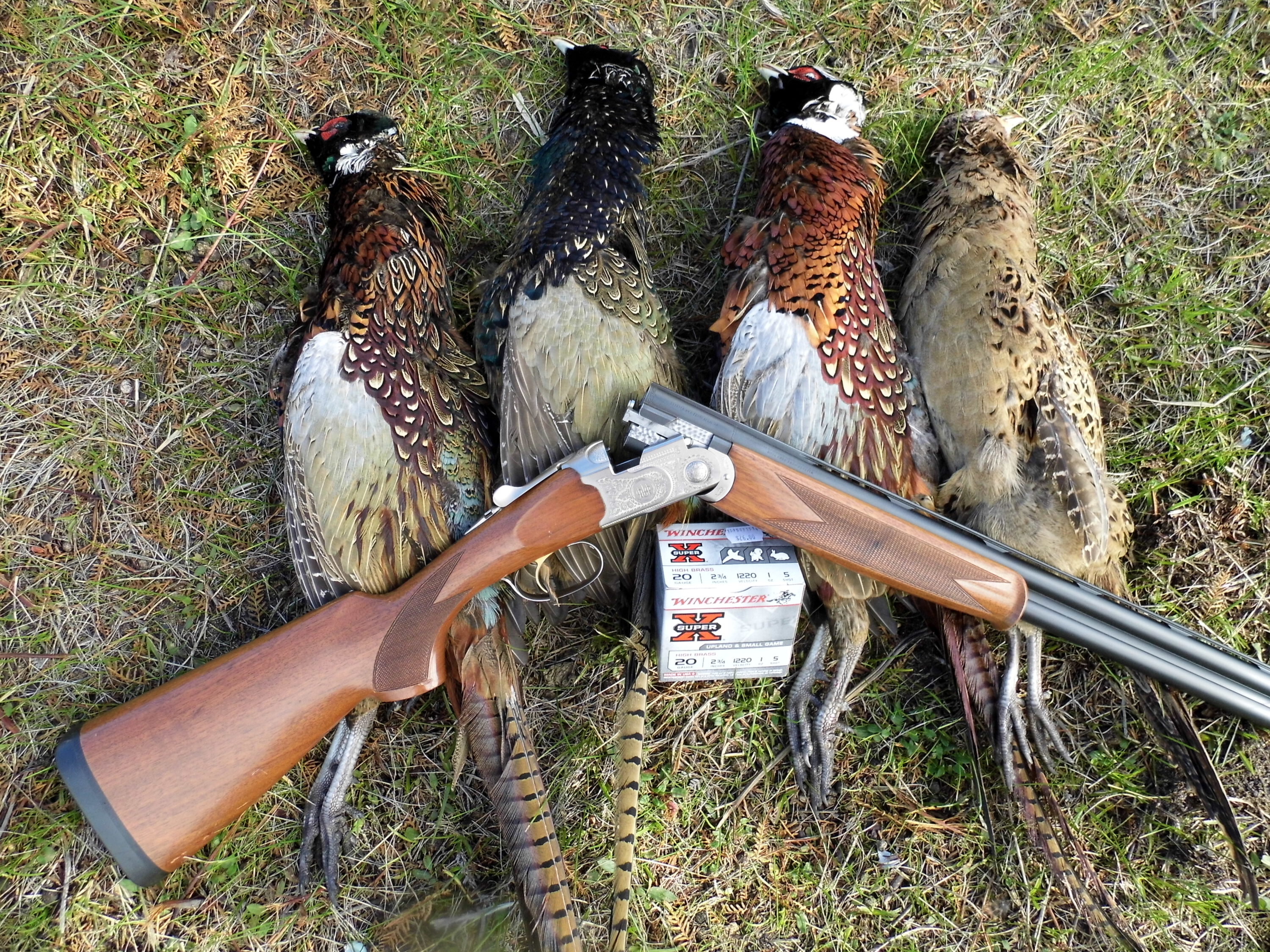
Reading also of the hunting of Mallard ducks eventually had me travelling to New Zealand to hunt them a number of times but until now I had never hunted pheasants; although there were times I could have. Once instead of listening to a Kiwi mate who told me to carry the shotgun as well as the 30/30 whilst pig hunting on his neighbour’s property on the North Island of New Zealand I decided to only carry the 30/30. Later that afternoon, while sitting on a hillside waiting out a rain squall, I helplessly watched a cock pheasant feeding a mere 25 metres from me. And furthermore, to add insult to injury, other pheasant were squawking away while settling down for the night in a nearby tree.
I thought the opportunity had slipped me by and I would never get the opportunity to hunt pheasant; that was until recently when my wife and daughters were planning a trip to England. I toyed with the idea of joining them for the trip over, then peel off and go pheasant hunting, but the thought of the 22 hour plane trip put a dampener on the idea. However I wasn’t going to be put off now that the thought of hunting pheasant was back in my head.
My daughters are far more articulate than I am, so it fell to the eldest, Michelle, to chase up a couple of prospects for me. It didn’t take her long to get onto a local outfitter and the information he supplied her with
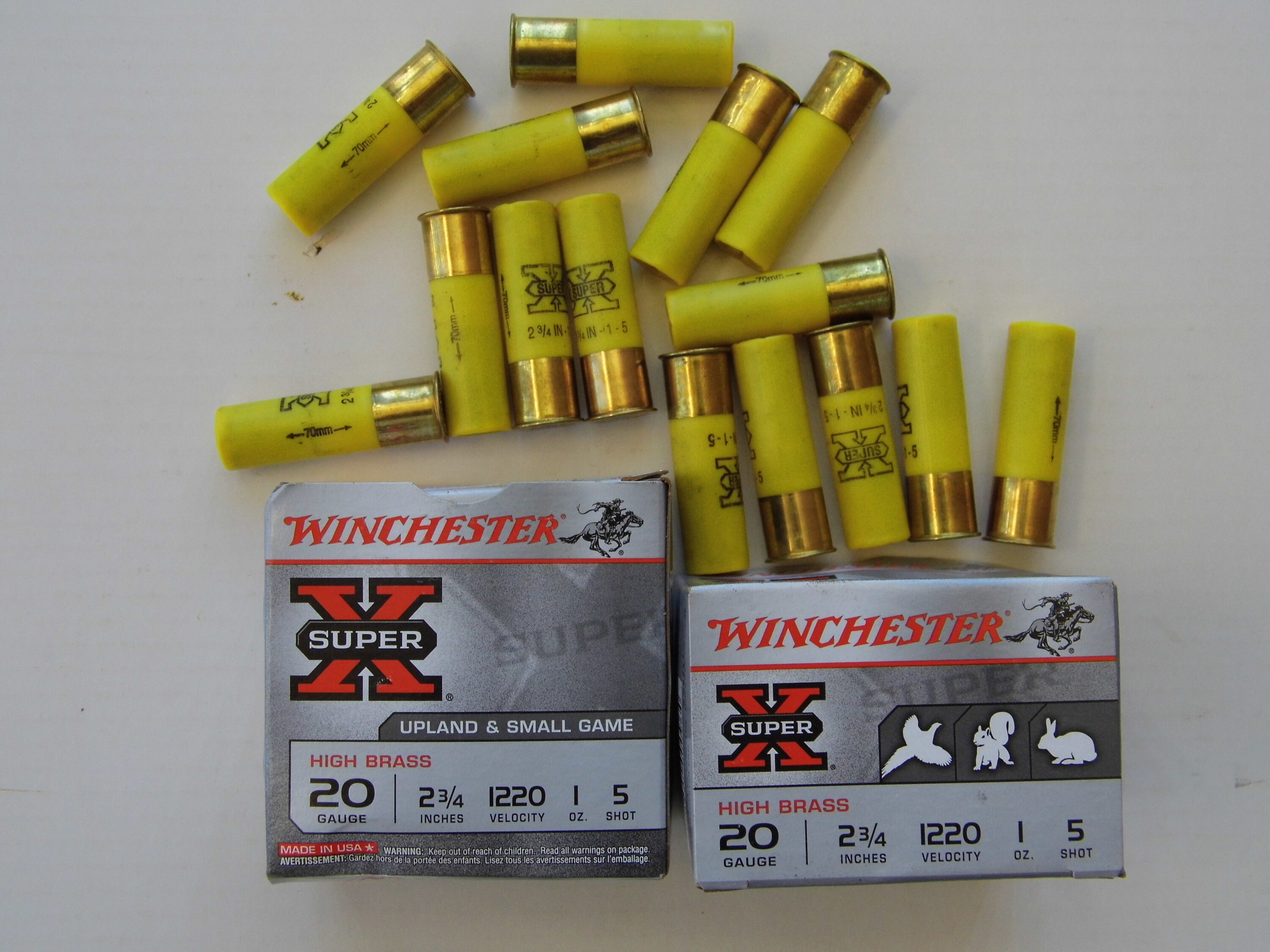
suited me just fine.
A week or so before the actual shoot Rob rang me up to discuss final details; then all was set. Michelle’s brother-in-law was keen to join me as well. We had planned on staying at the local hotel, but the $200.00 a night price tag quickly put me off. My wife quickly found us suitable accommodation nearly half the price. The Mount Victory cottages that my wife booked us into turned out to be perfect, immaculate down to the last detail. All we had to take was a bit of food.
I hadn’t been over the Wimmera way for a long time but the one thing that had always stuck in my mind from Ararat westward, was that it was bloody cold, even in the summer. We used to go rabbit hunting out from Ararat and even during summer the nights could be awfully cold. We planned on having lunch in the park at Marybourgh on the way over, but after grabbing some delicious meat pies at the local bakery we couldn’t get back into the car quick enough, my lord it was cold.
We arrived at our destination in plenty of time and, after booking into the cottages, we headed out the road, following the instructions Rob had given us to find the property on which we were to hunt over. After a couple of wrong turns we soon found the property we were looking for; then it was back to the cottages to light the fire. Thankfully we were allocated a good supply of wood which was excellent, as there was no way that fire was going to be allowed to go out.
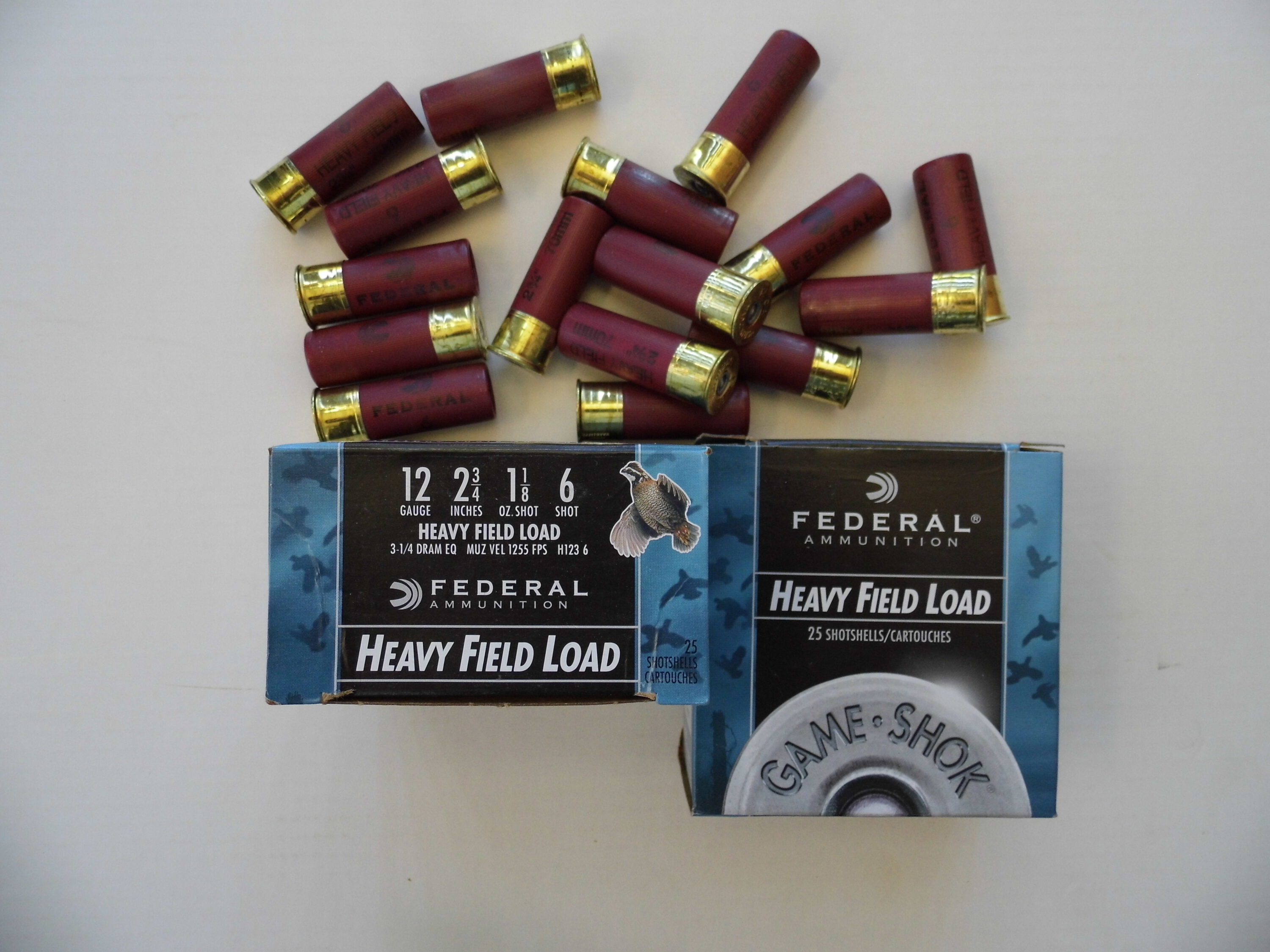
A 9.00 am start the next morning gave us plenty of time to cook up a good breakfast before heading off. The gods must have been smiling over us as the weather up until now had been atrocious but it looked as though today was going to be quite reasonable with the occasional light shower.
We met Rob, an easy going chap, and his dogs, Dax and Boris at his hut and straight away we knew we were in for a good day. I had brought two shotguns along, two Berettas, one in 12 gauge and the other in 20 gauge. Not having hunted pheasants before I tried to cover all situations from flushing them from under the dog’s nose to when they get up 30 metres in front of the dog. With all that in mind I settled for the old modified choke in the bottom barrel and the improved modified choke in the top barrel in the 12 gauge; modified in the bottom barrel and full choke in the top barrel of the 20 gauge.
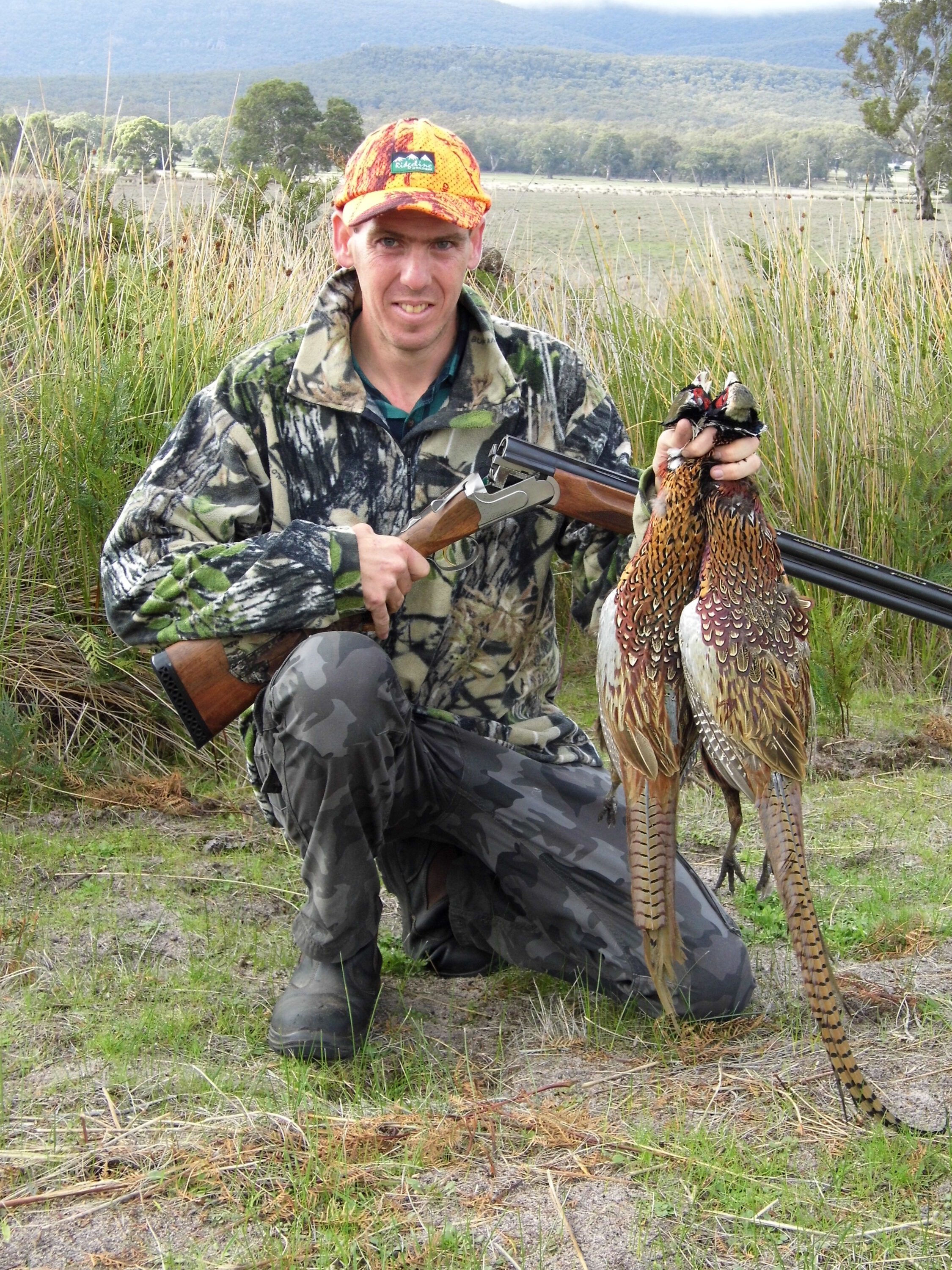
In hindsight both shotguns would probably had performed more appropriately with an improved cylinder fitted to the bottom barrel. After all any pheasant taken was destined for the table and the last thing I wanted was to have them riddled with shot. While lead shot is not good for the digestion it’s certainly hard on the teeth. While on the subject of lead shot and digestion a lady friend of my wife’s always used to get ducks off us during the season. She went to the doctors and needed x-rays and she watched rather alarmed as the doctor gazed at the x-ray. He then asked if she had she had been eating game meat; to which she replied ‘yes’. He then said, ‘that explains it, you have lead shot in your stomach.’ Exit one freeloader.
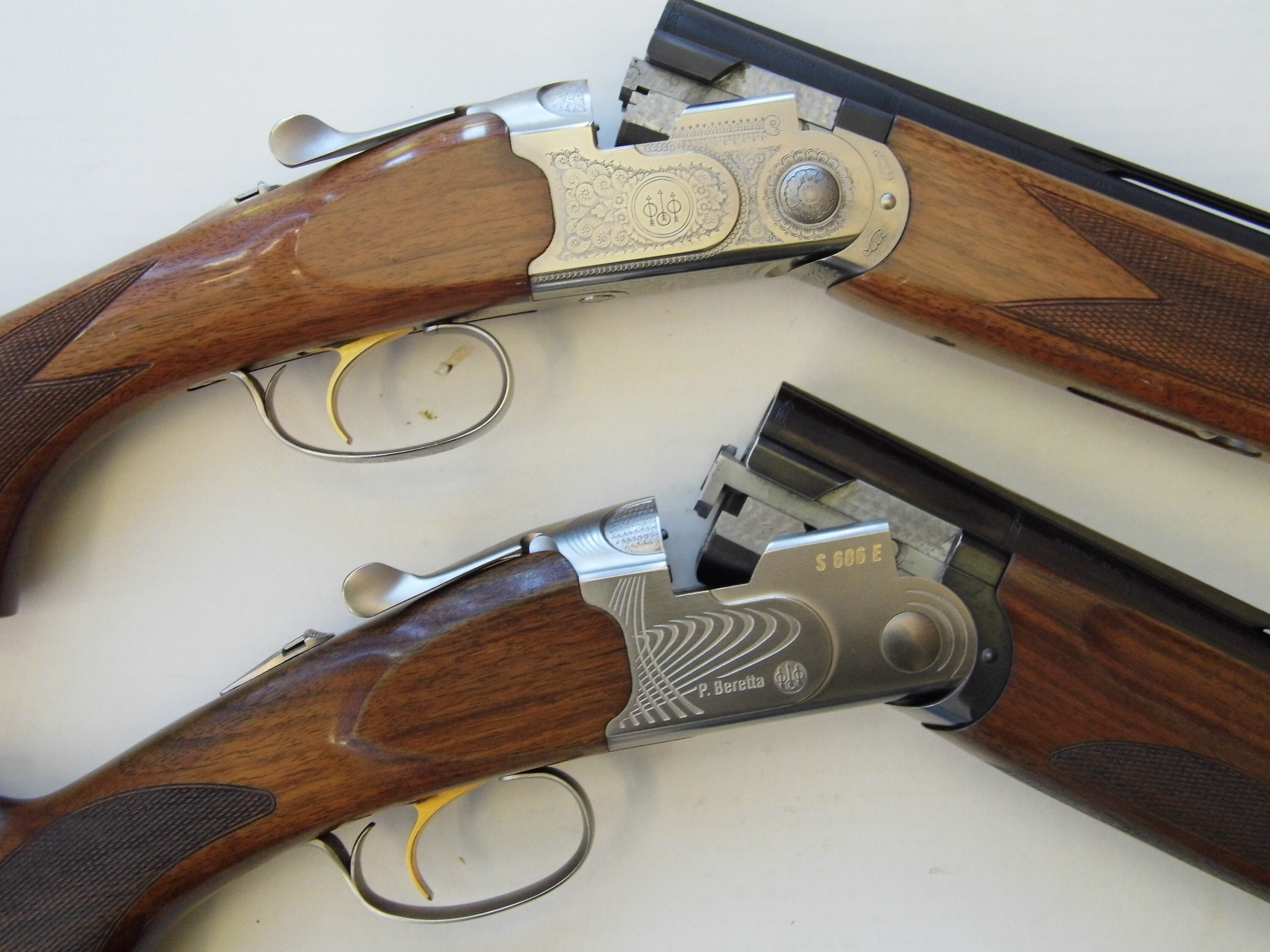
According to our guide, Rob, we would be putting in a full day hunting punctuated with a break for lunch after about 3 hours then we would continue on until dark if necessary.
Any thought of it being an extra easy hunt was soon dispelled shortly after we headed off. Apparently Rob had seen a pheasant getting about not far from the hut and sure enough the dog soon put it up shortly after we started hunting for it. It was a hen bird and it got up just in front of Blake so I allowed him the honour of taking the first shot. By the time Blake realised he still had the safety catch on the pheasant was well on the way and as the pheasant reached the tree canopy I had a quick shot at it and missed. Needless to say it was pretty humbling and I quietly hoped it wasn’t a sign of things to come.
The first part of the hunt was to be conducted through reasonably thick scrub, that being heaps of trees with a fern ‘understudy’. Any pheasant put up could present a reasonably difficult shot. While Blake covered the more open side of the scrub I followed the dog which had gone all ‘birdy’ all of a sudden, then sprung a point. Moving in quickly I mentally made sure that the safety was off then the pheasant, a hen bird, was up and away. I should have allowed it to get out a bit to allow for the pattern of shot to open up a bit more, but in my eagerness to get the first pheasant on the board I didn’t and, consequently missed an easy shot. I redeemed myself with the second barrel and collared the pheasant as it flew between the trees. The dog was quick to retrieve it and I breathed a sigh of relief as I replaced the empties with a couple of fresh shells.
By the time we reached the end of the patch of scrub, which was about a kilometre long, we had accounted for a number of pheasant, around 10 if memory serves me correctly. Most were clean kills which is what any hunter worth his salt aims to achieve, but I did drop and lose a cock pheasant. I thought I had caught it in the centre of the pattern of shot but when we went to retrieve it, it couldn’t be found. We searched for quite awhile before giving up and moving on. Later that afternoon we finally caught up with it about 200 metres away, this time it was added to the bag.
We all moved over to some thick cover that we call ‘roo grass’. This grass is quite thick and about a metre high, just perfect for pheasant to hide in. While Blake walked through the centre of it I skirted around the edge to cut off any pheasant that chose to outrun the dog instead of going up. It was surprising to see how far the pheasant ran before eventually taking to the air.
By the time we had finished hunting thoroughly through the thick cover we had picked up another 8 or so birds which was quite pleasing. The pheasant were sitting pat most times and only going up when the dog finally pin pointed them. I have no doubt what so ever that without the dogs’ hard work our tally of pheasant would be a lot lower, they were that hard to find.
By the time we stopped for lunch we had around 20 birds to our credit which was considered average for two hunters. I have always held the belief that I could get similar results while out hunting using a 20 gauge in comparison to using a 12 gauge. While the ammunition is dearer a 20 gauge built on a 20 gauge frame is far more enjoyable to carry for an extended period of time than a 12 gauge. It’s obvious lightness is certainly appreciated at hunt’s end I can assure you.

So as not to be declared a hypocrite both Blake and I were going to use our 20 gauges for the afternoon hunt. With lunch out of the way we changed guns and ammunition and headed off to the far end of the paddock. No sooner had we alighted from the vehicle and made ready the dog put a cock pheasant up practically from under out feet. Instead of taking to the air the cock pheasant headed off running through the high grass with the dog hot on its tail, with me following behind trying to load the 20 gauge while on the move.
50 metres on it was still running, then the dog caught up with it, forcing it to take to the air. To me it was the stuff that dreams were made of, a magnificent cock pheasant taking to flight in front of me, with me bringing my Beretta Silver Pigeon 20 gauge to bare on the rising bird. It simply couldn’t get any better. The load of No 5 shot quickly overtook the pheasant, plucking it neatly from the sky. The dog was quick to pounce on it and came proudly prancing back with it as only a German Shorthair Pointer can.
No sooner had I joined up with Blake and Rob than a hen bird got up close to us and as it broke to the left and over my left shoulder I neatly folded it with a shot from the 20 gauge. We moved over to a thick stand of grass and it wasn’t long before the dog put a pheasant up. I thought it was too far for a shot but not so Blake and we were all impressed when he folded it stone dead with the shot from his 20 gauge.
The dog was working really well and was soon onto more pheasants and we collared most of what got up. Blake got 2 in quick succession as they flushed from the thick grass and I even collared the odd one by the time daylight starting to fade, bringing an end to our hunt.
Was it worth, the time, effort, money and planning that went into it? You bet it was and I have no doubt Blake and I will be fronting up again in the near future.
Breakout Box
THE PHEASANT EXPLAINED
The common pheasant (Phasianus colchicus) is a bird in the pheasant family (Phasianidae). It is native to Asia and has been widely introduced elsewhere as a game bird. In parts of its range, namely in places where none of its relatives occur such as in Europe (where it is naturalized), it is simply known as the “pheasant”. Ring-necked pheasant is both the name used for the species as a whole and also the collective name for a number of subspecies and their intergrades which have white neck rings.
Linguistic Origin. The word pheasant is derived from the ancient town of Phasis, the predecessor of the modern port city of Poti in Western Georgia.
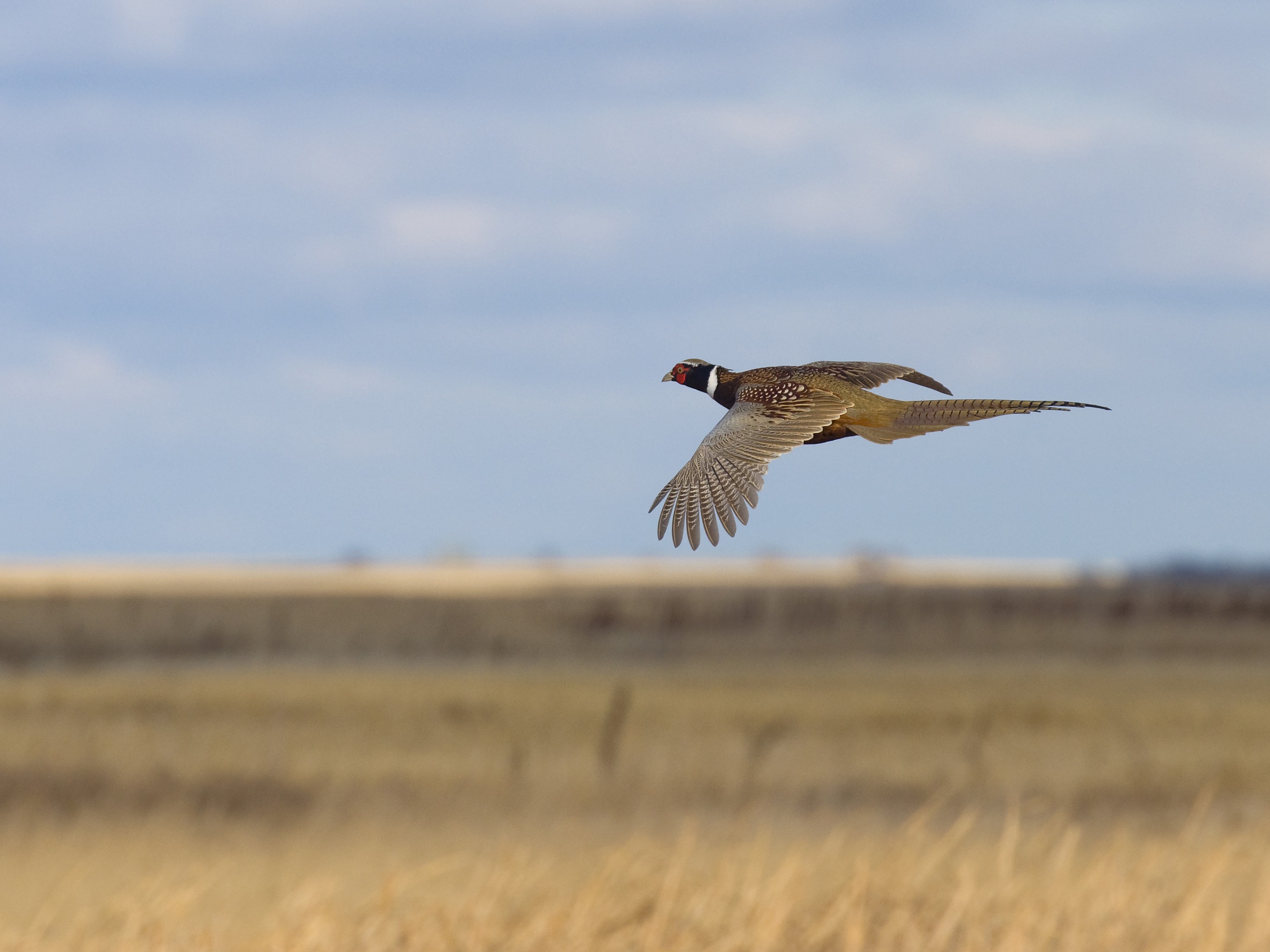
More About Pheasant. It is a well-known gamebird, among those of more than regional importance perhaps the most widespread and ancient one in the whole world. The common pheasant is one of the world’s most hunted birds and it has been introduced for that purpose to many regions, and is also common on game farms where it is commercially bred. Ring-necked pheasants in particular are commonly bred and were introduced to many parts of the world; game farm stock can be considered semi-domesticated. The ring-necked pheasant is the state bird of South Dakota, one of only three U.S. state birds that is not a species native to the United States.
In Australia, the most suitable breed for commercial meat production is the ‘True’ or Ringneck type, genus Phasianus. These pheasants, of which there are more than thirty species, are the oldest and best known of all pheasants. The Chinese Ringneck breed (Phasianus colchicus torquatus) or its mutants have the most contrasting colours of all ‘True’ pheasants. As with other pheasants, the male is brightly coloured while the female has much plainer markings.
Identification. Male. The head and neck of the male is bluish-green with a distinct white collar around the neck. The centre of the breast is a rich purplish-red, the sides are lighter and the flanks are pale yellow with large black markings. Tail feathers are olive yellow with broad black crossbars.
Female. The female has crown barred black and brown neck feathers, with chestnut borders. Breast and back feathers are mottled with a blackish-brown centre. The abdomen is pale brown. The tail feathers are marked with black and buff close wavy lines.
Temperament. Pheasants are very secretive birds and can easily be alarmed. They are generally not vocal but tend to squawk during the breeding season. Pheasants are similar in nature to peafowl, but wilder, and are not as placid as other species of poultry (indeed some species can be quite highly strung). Males can be aggressive and may attack victims with their sharp spurs. Male Reeve’s in particular have a reputation for being bad tempered and are not recommended for beginners or those with little experience keeping pheasants.
Some History. Most pheasants come from Asia, but due to the wholesale clearing of naturally timbered area, many species are on the endangered list. The Silver, Golden, Reeves and Lady Amherst pheasants are not included as endangered species.
In England, Pheasants were brought in from China and other parts of Asia, and used in Feudal times as a source of food. Naturally, the consumers were the Lords of the Manors, and not the peasants. Poaching of pheasants and other stock owned by the Lords was rife, and mostly punishable by death. As the rich became richer, the sport of hunting developed, and the animals were hunted merely for the sake of it. Many people poached these animals to eat as a way of objecting to the wasted food.
Lifespan. Pheasants are hardy birds, living from 15 years up to 25 years.
Game pheasants used for eating are a hybrid cross between Mongolians, Blacknecks and Chinese Ringnecks. The crossing produces meatier birds and also increases their egg laying productivity. Pheasants eggs are about half the size of a chicken and are good for cooking.
Hunting Method. Generally they are shot by hunters employing gun dogs to help find, flush, and retrieve shot birds. Retrievers, spaniels, and pointing breeds are used to hunt pheasants.

0 Comments